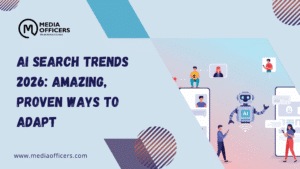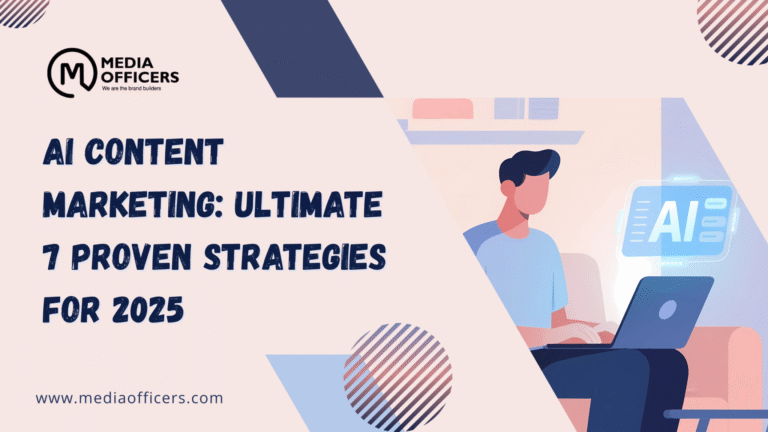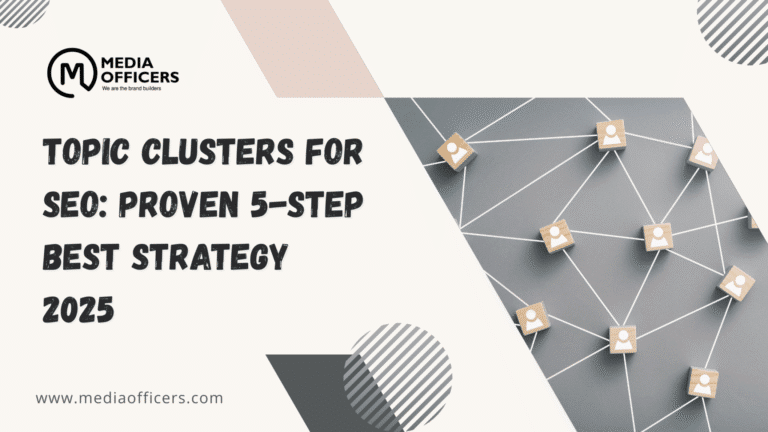AI search trends 2026 are reshaping how users discover information online, making it essential for brands to align with intent, clarity, and speed. As search engines and AI assistants grow smarter, the path to visibility requires intent-driven content, structured data, and a user-first experience. In this guide, we break down the most impactful AI search trends 2026 reveals and lay out concrete steps you can take to stay ahead.
Throughout this article, you’ll see the primary keyword AI search trends 2026 woven into strategic recommendations, headings, and actionable checklists. Expect practical tactics you can implement today to improve relevance, CTR, and long-term resilience in a shifting search landscape.
What AI search trends 2026 reveal about query complexity
One of the clearest AI search trends 2026 presents is the growth of more complex, multi-part queries. Users no longer settle for single-term questions; they ask for nuanced comparisons, step-by-step guidance, and context-rich explanations. This drives a shift toward content that clearly disambiguates intent and delivers layered information. If your content sticks to generic answers, you’ll miss the opportunity to appear in more meaningful AI-assisted results.
To align with AI search trends 2026, create content that answers primary questions and anticipates follow-ups. Use topic clusters that connect core topics with secondary ideas, and structure information so AI systems can pull precise sections when users pose related questions. In short, the better you map intent, the more your pages will surface in AI-driven results.
Emphasize intent with structured content
Structured content helps AI understand what problem you’re solving. When you present problem-solution blocks, data tables, and clear takeaways, you boost your chances of appearing in featured snippets or answer boxes a key advantage in the realm of AI search trends 2026. Use headings that reflect user intent, and place concise, direct answers near the top of each section.
Tip: Use schema markup for questions and answers and ensure your pages clearly answer those questions within the first 150-200 words. This aligns with AI search trends 2026 by feeding precise signals to AI crawlers.
The CTR challenge: why click-through rates are shifting in 2026
Another notable AI search trend 2026 highlights is a decline in click-through rates (CTR) on traditional results as AI assistants surface more direct answers. When users get answers within a snippet or a voice response, they may not click through to your site. This doesn’t mean content isn’t valuable; it means you must optimize for exposure beyond first-click metrics.
To counteract CTR declines while embracing AI search trends 2026, focus on creating authoritative, engaging content that encourages users to visit your site for deeper insights. This involves writing compelling meta descriptions, leveraging rich media, and offering clear value propositions in on-page copy. Consider designing content that complements AI-driven answers provide tools, downloadable resources, or interactive elements that invite engagement beyond the initial answer.
How to measure impact beyond CTR
While CTR remains important, AI search trends 2026 push you to broaden your success metrics. Look at on-page engagement, scroll depth, time to first meaningful content, and conversion signals. Evaluating audience satisfaction through dwell time and repeat visits gives you a more complete view of your content’s effectiveness in an AI-enhanced environment.
Action item: set up dashboards that correlate search visibility with on-page engagement metrics. Track the impact of AI-driven changes across multiple signals, not just clicks.
Expanding beyond text: voice, images, and video in AI search trends 2026
AI search trends 2026 indicate a broadening of the search ecosystem beyond text. Voice search, visual search, and video become increasingly central as AI assistants leverage multimodal data to answer questions. This shift challenges content creators to optimize for non-text queries and diverse formats.
For voice search, prioritize natural language, concise answers, and direct callouts that align with spoken queries. For image and video search, provide robust alt text, structured image data, and video metadata that helps AI connect visuals with relevant queries. Incorporating transcripts, captions, and chapters improves accessibility and searchability in AI-enabled environments, aligning with AI search trends 2026.
Constructing multimedia-ready content
Multimedia content should be purpose-built for AI discovery. Use descriptive file names, structured media schemas, and context-rich surrounding copy. When AI models understand both the media and its context, your assets are more likely to appear in visual or video-based AI results, amplifying your reach in AI search trends 2026.
Semantic search and the authentication of intent
Semantic search is a core component of AI search trends 2026. Rather than focusing on keyword matching alone, search systems consider intent, context, synonyms, and user history. This amplifies the importance of content that addresses user needs in a comprehensive, semantically rich way.
To optimize for semantic search, build topic clusters with interconnected subtopics. Use natural language in headings and body copy, and emphasize authoritative, well-structured content. Ensure your internal linking reinforces semantic relationships, so AI systems can navigate topics with ease and surface your most relevant pages when intent aligns with user queries.
Key tactic: create pillar pages that summarize a broad topic and link to detailed articles. This strengthens semantic cohesion and supports AI search trends 2026 by centralizing authority around core themes.
AI-powered optimization: where automation meets strategy
AI search trends 2026 encourage the use of AI-powered tools to audit, optimize, and personalize content. Automation can help identify gaps, test headlines, and improve readability at scale, while human oversight ensures quality and accuracy. The most successful teams blend AI efficiency with thoughtful strategy to sustain long-term growth in AI-driven search results.
- Topic modeling: use AI to map related questions users ask and preemptively answer them.
- A/B testing: run experiments on titles, meta descriptions, and on-page elements to determine what resonates with your audience in AI search trends 2026.
- Personalization: tailor content experiences based on user intent signals, location, and behavior while respecting privacy.
Adopting AI for optimization doesn’t replace human expertise; it amplifies it. The combination is where AI search trends 2026 truly become a force multiplier for content teams.
Structured data, schema, and trust signals
Structured data and schema markup are repeatedly highlighted in AI search trends 2026 as essential for clear AI understanding. Marking up questions, products, reviews, and events helps AI crawlers extract precise information and present it in rich results. This increases the likelihood of appearing in knowledge panels and featured snippets, which are especially valuable when AI assistants surface direct answers.
Beyond technical markup, trust signals matter. E-E-A-T (experiential, expertise, authoritativeness, and trustworthiness) remains a central criterion as AI systems evaluate quality. Demonstrating credible expertise through author bios, cited sources, and transparent data sources strengthens your position in AI search trends 2026.
Checklist for schema success: implement FAQPage, HowTo, and Article schemas where appropriate, keep markup up to date, and validate with the Google Rich Results Test or the equivalent tooling for other platforms.
Content quality and user experience in an AI-first world
As AI search trends 2026 evolve, the importance of high-quality content cannot be overstated. AI models tend to reward content that is accurate, current, and clearly structured. Strategically organized content improves readability and helps users locate the exact information they need, reducing friction and increasing engagement.
Prioritize value over volume. Publish authoritative, well-researched content with practical takeaways. Make sure every page answers a real user need, includes reliable sources, and presents data in an accessible way. A strong user experience including fast load times, mobile optimization, and accessible design complements AI-driven discovery and contributes to overall search performance in AI search trends 2026.
How to adapt: a practical playbook for 2026
armed with insights about AI search trends 2026, here is a practical playbook you can implement now. These steps help you maintain visibility as search evolves.
- Audit intent across your top topics: map each page to user intents and ensure your content covers primary and secondary questions.
- Adopt topic clusters: build pillar content supported by detailed subpages that interlink logically, reinforcing semantic signals for AI search trends 2026.
- Optimize for long-tail and multi-part queries: create content that answers complex questions with clear, structured sections and bullet points.
- Invest in schema and structured data: implement FAQPage, HowTo, and Article schemas; validate markup regularly.
- Enhance multimedia assets: optimize images and videos with descriptive alt text, transcripts, and chapters to capture AI-driven visual search.
- Strengthen E-E-A-T signals: publish author bios, cite high-quality sources, and provide verifiable data points to build trust.
- Monitor engagement beyond clicks: track dwell time, scroll depth, bounce rate, and conversion signals to gauge content quality in AI contexts.
- Experiment with AI-assisted tooling: use AI to draft outlines, generate meta descriptions, and test headlines while maintaining human oversight for accuracy.
- Personalize where appropriate: tailor content experiences based on user intent signals but respect privacy and data protection rules.
- Measure velocity and adaptability: set quarterly goals to refresh evergreen content as trends shift and new AI patterns emerge.
By following this playbook, you align with AI search trends 2026 and position your site to perform well across traditional and AI-enhanced search experiences. The emphasis is on intent, structure, quality, and trust elements that consistently drive long-term visibility.
Frequently Asked Questions
What are AI search trends 2026 all about?
They highlight a shift toward complex queries, AI-driven results, multimodal search (voice, image, video), and a focus on intent, structure, and trust. Content that is semantically rich and well-marked up tends to perform best.
How can I improve CTR when AI surfaces direct answers?
Optimize for intent-driven content, craft compelling meta descriptions, and provide value beyond the initial answer with in-depth guides, tools, and downloadable resources that entice clicks to your site for deeper insights.
Should I change my SEO exactly for AI or keep traditional tactics?
You should blend both. Maintain solid traditional SEO practices (quality content, fast pages, strong links) while embracing AI-focused tactics like structured data, semantic content, and multimedia optimization to satisfy AI-driven discovery.
Will AI content harm rankings?
Not inherently. The key is quality and trust. AI can assist production, but human review is essential to ensure accuracy, originality, and usefulness qualities that AI search trends 2026 reward when delivered consistently.
Conclusion
In the evolving landscape of AI search trends 2026, adaptability is the differentiator. By embracing complex queries, prioritizing intent, enhancing semantic structure, and delivering high-quality, trustworthy content, you position your site to win in AI-enabled search ecosystems. Remember, the objective is not just to rank, but to satisfy user needs with precise, actionable, and accessible information. Start implementing the playbook today, and you’ll build lasting visibility as AI search continues to transform how people discover, compare, and decide.





